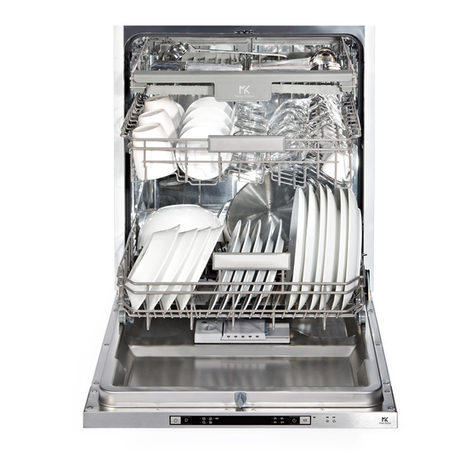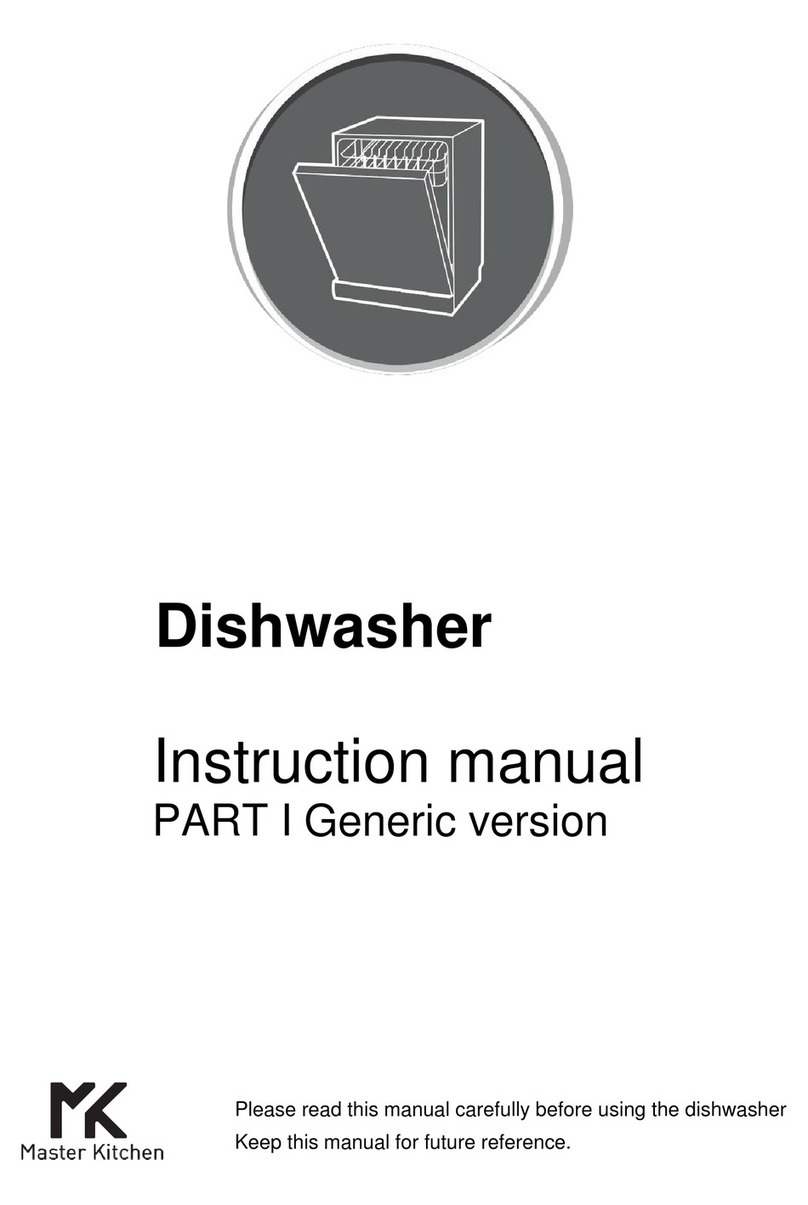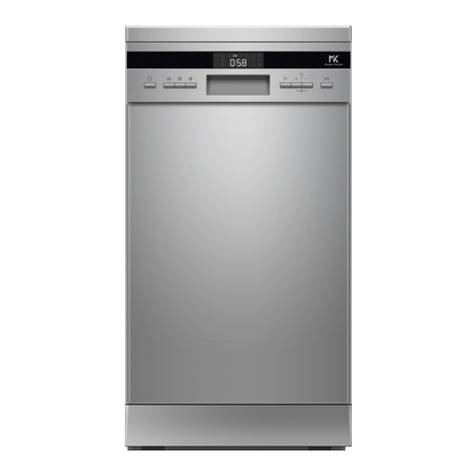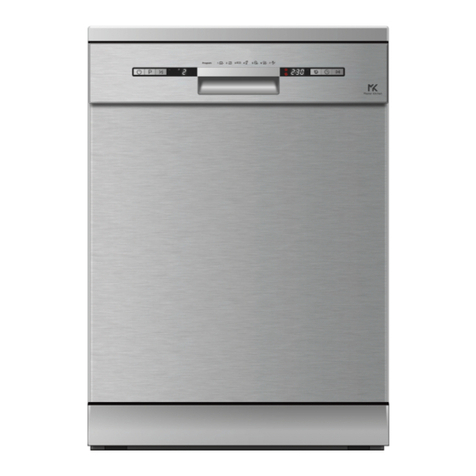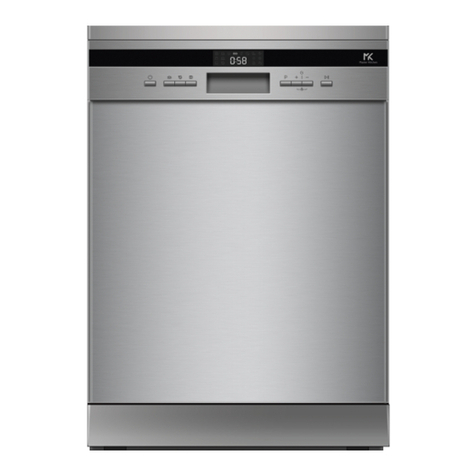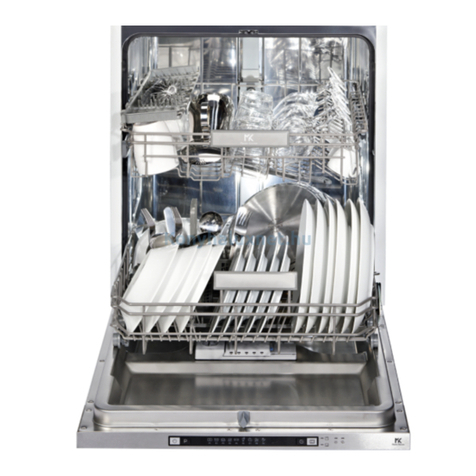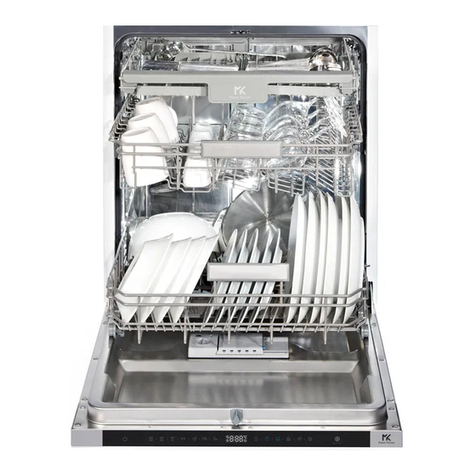
• If the power cord is damaged, it must be replaced by the manufacturer, the
authorized Service Centre or a qualified person to avoid dangerous situations.
• Place the cutlery inside the cutlery basket with the sharp ends pointing
downwards, or place it in the cutlery drawer in a horizontal position with the sharp
ends pointing downwards.
• If you open the appliance door while it is in operation, hot water can be sprayed
out of the appliance. Carefully open the door of the appliance while the program is
running.
• If overloaded, dish racks can cause the appliance to tip over. Never overload
dish racks in free-standing appliances.
• Do not leave the equipment with the door open unattended to prevent anybody
from tripping and falling.
• Before performing any maintenance work, turn off the equipment and pull the
plug out of the socket.
• Do not use high-pressure water spray or steam to clean the appliance.
• If the equipment has ventilation openings in the base, these should not be
covered by objects such as a carpet.
• The equipment must be correctly connected to the water system with the new
pipes supplied. Used pipes must not be reused.
• In case of built-in installation, do not use the equipment before installation is
completed, because of the safety measures.
• Follow the instructions supplied with the appliance.
• Always be careful when moving the equipment,
since it's heavy. Always wear safety gloves and appropriate footwear.
• Do not place or use the equipment in a place where the temperature may fall
below 0 °C.
• Install the equipment in a safe and suitable place that meets the installation
requirements.
• For disused devices, disconnect the power cord plug, then cut the power cord
and destroy the door locking system of the appliance so that the door may not be
closed again.
• For the installation and connection of the appliance, follow the instructions given
in the operating and installation instructions. Incorrect installation may cause
injury.
Power and grounding instructions
• The equipment must be grounded.
• Do not use multiple sockets and extensions.
• Make sure not to damage the plug and cable. If the electrical cable needs to be
replaced, the work must be carried out by qualified and experienced personnel.
4
